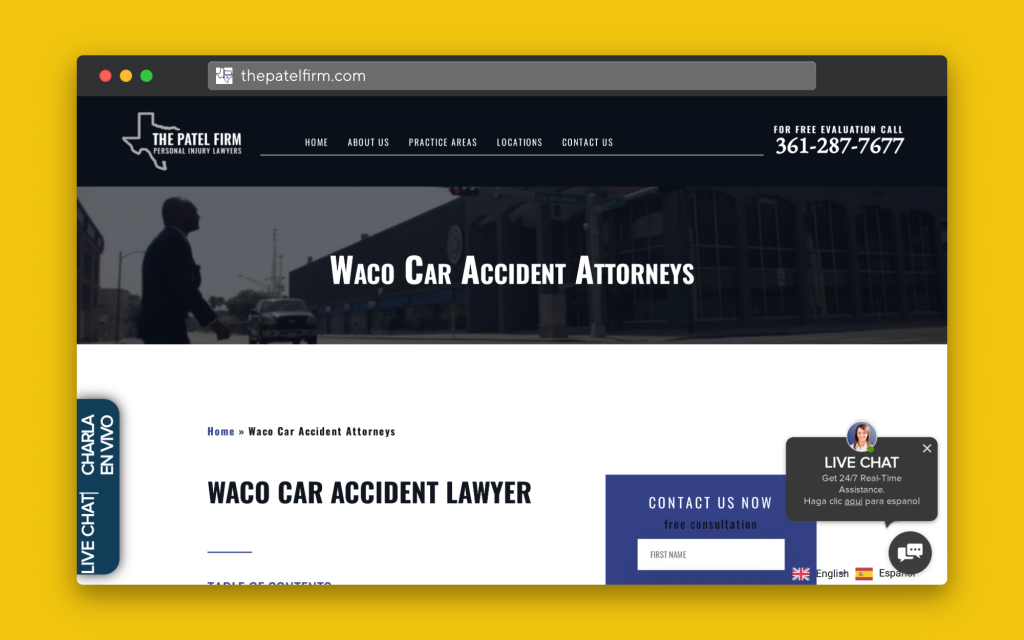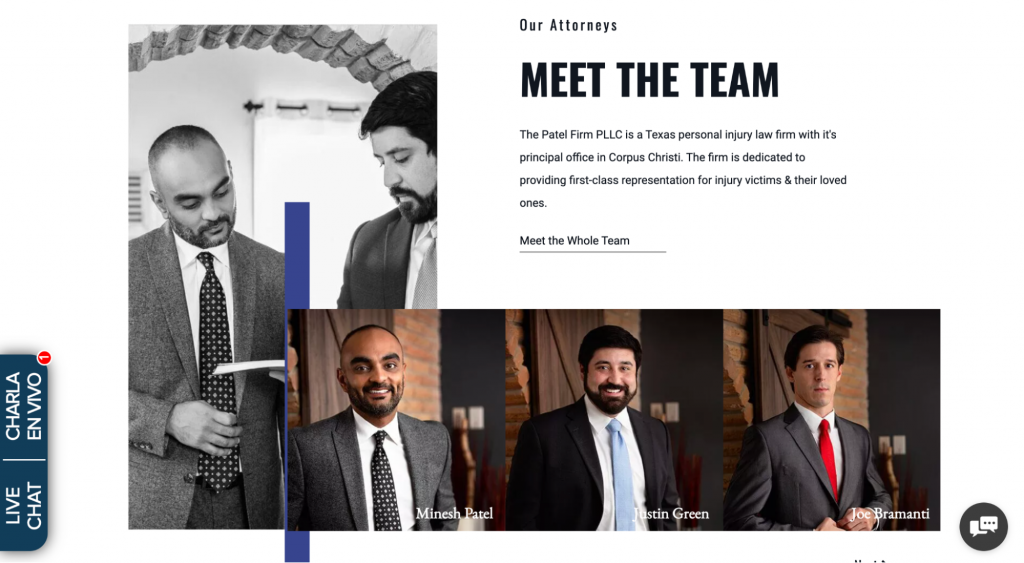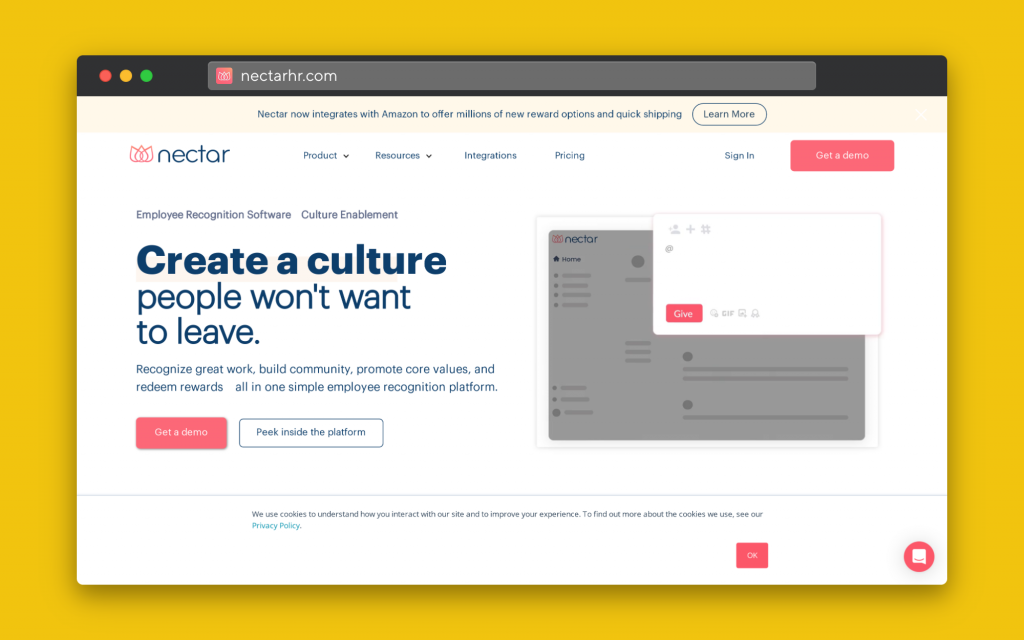9 Sales Funnel Examples That Can Inspire Your Own
48% of companies said their number one priority for next year was improving their sales funnel. The top answer was “closing new deals.” It’s no wonder these two were the top responses. Higher closing percentages equal more revenue. But to close more, you must attract, persuade, and retain customers. Enter the sales funnel. Creating an effective sales funnel is necessary to scale your business and maximize your closing potential. In this blog post, you’ll learn what a sales funnel is, the six stages of the funnel, and see nine examples of companies doing it right.

What Is a Sales Funnel?
A sales funnel is the process consumers go through before becoming a customer. It starts with awareness and ends with loyalty. There are six stages the potential customer can go through:
- Awareness
- Discovery
- Evaluation
- Intent
- Purchase
- Loyalty
They can fall out of the funnel at any point, so optimizing each stage of your funnel is essential to higher conversion rates. Many businesses also mistakenly neglect the sixth phase: loyalty. This is when the customer becomes a repetitive buyer and ambassador for your brand. In other words, they continue to shop with you and tell everyone they know to do so. You need to know what each stage represents if you already have a sales funnel and are trying to improve it–or you’re getting ready to suggest new optimization tricks in your next business proposal.
Awareness Stage
The awareness stage symbolizes two things:
- The person realizes that they have a problem, desire, or need that must be resolved
- The person becomes aware of your brand, product, or service
Usually, people enter the awareness stage after seeing your advertisements, getting a referral or recommendation from someone, stumbling across one of your blog posts during a Google search, and more.
Discovery Stage
If the person decides to learn more about your products and services after becoming aware you exist, they enter the discovery stage. An example of this in action is if a potential customer finds your business card (thus becoming aware that your product or service exists) and then decides to scan the QR code on your business card to look at pricing, a full list of services, etc. Here, it’s critical to provide potential customers with answers to their questions. If you want to move them to the next stage, you must present yourself as the solution to their problem and explain how you will fix it.
So if you choose to make a QR code, you could include a quick FAQ dropdown at the end of the page that the code leads to.
Evaluation Stage
In the evaluation stage, the potential customer starts studying your products/services and comparing and contrasting you to competitors. This is a make-or-break stage, as the person has committed to making a purchase but is trying to determine who to trust.
Intent Stage
The intent stage is when the potential customer is most interested in your product but hasn’t swiped their credit card yet. However, they have expressed measurable interest and taken some action, like requesting a demo, signing up for a free trial, or adding products to their cart.
Purchase Stage
Once the person buys the product or service, they have officially reached the purchase stage. They’re now a customer or client, and the goal is no longer to close them.
Loyalty Stage
Lastly, the loyalty stage is when the now-customer or client becomes a repeat customer and/or an advocate for your brand. You’re the place they shop every time they need refills or replacements. Or if you’re a service-based business, they’re a retainer client or someone who continues to give you business.
They’d also recommend you to friends and family, leave a review or testimonial, and more to help bring you new business.
Why Should You Build a Sales Funnel?
- Nurturing leads results in 47% more purchases. You increase your chances of closing drastically by supporting leads through every stage of the customer journey with a thoughtfully-designed sales funnel.
- Nurturing leads well results in higher quality leads that are ready to buy. Marketo research found that when companies become skilled in lead nurturing, they generate 50% more leads ready to buy and lower costs by 33%.
- You’re 3x to 35x more likely to sell to existing customers than new ones (Markinblog). Not only that, but Markinblog also found that product-based companies have a 60-70% chance of selling to a returning customer versus a 5-20% chance with a new one. This drastically proves the importance of having a strong loyalty stage in your sales funnel.
- On average, companies that offer renewals and upsells receive 70-95% of their revenue from them (Markinblog).
Example #1: Basecamp

Basecamp is a project management platform that offers simple tools and techniques to reduce complexity when managing a team. What they did right: Their homepage instantly tells website visitors what they are and offer, making it impossible to get the wrong message. It also immediately addresses its target customers’ primary pain point: over-complicated software that makes project management harder than it has to be.
After telling leads what problem they will solve, they follow up with a bright green CTA (call-to-action), encouraging them to try Basecamp for free. The CTA also conveys a no-risk message by ensuring customers can cancel at any time and don’t need a credit card when signing up for the free trial (so they won’t be unexpectedly charged if they forget to cancel it). Finally, they feature a video on their landing page that shows visitors exactly how the product works.

And according to Techjury, videos can boost landing page conversions by 86%.
Key takeaways:
- Tell them instantly, don’t make website visitors guess what you do for too long.
- Address their pain immediately and explain what you will do about it in simple terms.
- Use clear CTAs that are clickable and easy to find.
- Incorporate videos in your landing pages.
- Offer free trials and guarantee no risk.
Example #2: The Patel Firm

The Patel Firm helps clients with personal injury lawsuits which means they focus on helping people who have been in accidents that were caused due to someone else’s negligence. In industries like medicine or law, it is important for businesses to create a connection with their potential clients. This is why offering consultation or evaluation free of charge is important. Hopping on a video call with your potential client not only serves to find out more about their problem and allows the business to connect with a potential client and earn their trust.
Clients searching for help with a personal injury lawsuit are probably also confused about how to go about it because this is not something most of us deal with daily. To ensure potential clients have their questions answered, The Patel Firm has a blog containing a lot of information about different types of lawsuits or injury claims. Each post is accompanied by a form that allows clients who find them and their website to reach out for a free consultation.
This is what that looks like:
What they did right: Similar to Basecamp, The Patel Firm explains how they do what they do. This potentially highlights their biggest differentiation factor, setting them apart from competitors. Their homepage includes a video explaining how they help clients, a list of their areas of practice, and some client testimonials. They also help build trust by including a page for each member of their team:

Lastly, they prioritize content marketing. Their blog contains informational posts that answer their potential customers’ most important questions. Blogging attracts new leads from organic search and guides them into the discovery and evaluation stages.
According to Markinblog, 55% of businesses reported blog posts as the most effective way to get leads to the next sales funnel stage (no matter which one).
Key takeaways:
- Explain what makes you different right away and in simple terms
- Display social proof to establish credibility, such as brands you’ve worked with or where your work has been featured
- Prioritize content marketing in your overall marketing strategy
Example #3: Rosenbaum & Rosenbaum

Rosenbaum & Rosenbaum is another personal injury firm that helps customers with lawsuits. Like The Patel Firm, they connect with customers by offering free consultations, a live chat option, and a 24/7 helpline. They also include an updated moving panel that includes cases they have won claims for:
This is a great example of a landing page that draws customers in using previous wins they have achieved for clients. What they did right: Rosenbaum & Rosenbaum makes moving through the sales funnel easy. Users have many options to contact the firm, and they are quickly moved to the next step of the funnel. They are also available on multiple social platforms, which companies in the law space often do not pay enough attention to.

Key takeaways:
- Make contacting them for a consultation an easy-to-complete process that is free of distractions
- Including the previous case wins helps build trust with website visitors.
Example #4: LawRank

LawRank is an SEO agency for law firms looking to increase their organic traffic. What they did right: Like Basecamp, their homepage features a video. But more noticeable is their proof of success directly underneath the main heading. Instead of displaying social proof from other brands, they show exactly how successful they are by telling potential clients what they do for existing ones.
They also create scarcity with the phrase, “Find out if we have a spot in your market.” They aren’t desperate for new clients and present working with them as a privilege rather than an expense. Next, they present a simple three-step process on their homepage. The language is also client-centered, not business-centered.

Finally, they keep a regularly-updated blog like Business Insurance USA, publishing content on topics like SEO and Google ranking factors.
Key takeaways:
- Show leads that you’re worth the investment by displaying results you’ve gotten from previous clients
- Present your brand as a valuable partner, not a desperate vendor
- Use you-centered language to sympathize with leads as individuals with pain points
Example #5: ReliableSoft

ReliableSoft is a digital marketing agency that teaches brands and business owners how to grow organic traffic. They do so with detailed training courses and informational content on digital marketing, SEO, web hosting, and more. What they did right: The homepage offers two options: to view the digital marketing course or the SEO course.
Below, they also explain in bullet points what results they promise to deliver if you work with them. And within a few seconds of viewing the homepage, a pop-up appears with a free opt-in.

After entering their email address, the lead moves down the sales funnel because they’ve taken action that explicitly proves their interest. Plus, they’re also now part of the brand’s email list, so they’ll receive marketing emails from them regularly.
Key takeaways:
- Offer free downloads (“opt-in”) to encourage users to take action and join your email list
Example #6: OptinMonster

OptinMonster is a multifaceted conversion tool that helps clients grow their email lists, increase sales, reduce cart abandonment, and more. What they did right: Like ReliableSoft, visitors are met with a pop-up a few seconds after loading the page with an incentive to sign up. However, OptinMonster offers a special discount instead of a free download if they purchase within a certain number of hours.

They also have four pricing options, the cheapest being $9 a month and the most expensive a little over $32.

Each tier also features a red strikethrough that shows the available prices used to be more expensive, making it look like an even better deal. This type of tiered pricing works. According to Bidsketch, offering different packages with tiered pricing options leads to a 32% increase in sales.
Key takeaways:
- Incentivize leads to sign up fast by offering a time-limited discount
- Offer different pricing tiers or packages to attract clients and customers with different budgets
- Highlight the most popular or middle package and highlight the biggest benefits of each one
Example #7: Groupon

Groupon is like a search engine for coupons. Users can enter their desired location in the search bar to find deals on everything from Disney World to Sam’s Club memberships to oil changes. What they did right: Groupon is a huge proponent of first-time signup discounts. Within seconds of loading the page, they offer users 20% off when they join with their email address.
According to Optinmonk, mobile pop-ups have an 11.07% conversion rate and 9.69% on desktop, making them highly effective lead-generating tools. Since Groupon doesn’t offer products or services, users typically make one purchase at a time and use email marketing to keep them coming back. Another high ROI strategy, email marketing, has a jaw-dropping ROI of $36 for every $1 spent.
Key takeaways:
- Use pop-ups to generate more leads and sign-ups
- Build an email list to move current leads down the sales funnel and retain existing customers
Example #8: Nectar

Nectar is an employee recognition software that helps small businesses create a great company culture and build a community that keeps employees engaged. What they did right: The homepage summarizes Nectar’s product, purpose, and process with a few lines that deliver a powerful punch. The message is clear and potential customers know exactly what to expect when they purchase. The CTA encourages visitors to book a demo to experience Nectar before investing. And a few scrolls down, they’re met with a simple process explaining how their software works.
Nectar also establishes credibility by displaying testimonials from current clients, displaying a snippet of their 100+ ratings on G2, and demonstrating quantifiable results by showing visitors that 94% of customers see an increase in employee engagement. Here is what each of those elements looks like for a website visitor.


Key takeaways:
- Include testimonials from current or previous clients. Nifty found that 36% of top-performing landing pages include them.
- Feature social proof on your landing pages. Pages with social proof have a conversion rate that’s 1.1% better than those without.
Example #9: Shein

Shein is an online retail store selling extremely affordable clothing and accessories. What they did right: Like other examples, Shein greets website visitors with a pop-up discount if they sign up immediately. But what’s more, they offer free shipping on orders over $49 and promise free returns. Free shipping is a proven way to increase purchases. Research shows that consumers are 4x to 5x more likely to buy with free shipping.
And when visitors try to exit the site, Shein often bids them farewell with an exit pop-up that attempts to save them. According to Wisepops, exit pop-ups have an average conversion rate between 4% and 5%, higher than display ads.
Key takeaways:
- Offer free shipping when possible to attract more customers
- Offer free returns to guarantee customer satisfaction and confidence in your brand
- Use exit pop-ups to save leads and keep users on your site
Final Thoughts on Sales Funnels
Sales funnels are an effective way to increase conversion rates. By optimizing your landing pages for each stage, you can push more leads through the end of the funnel and ensure they come back for more. By studying these examples, you’ve now seen how nine successful businesses construct their funnels. Now, put these tips to practice and reap the results for yourself.




Leave a Reply